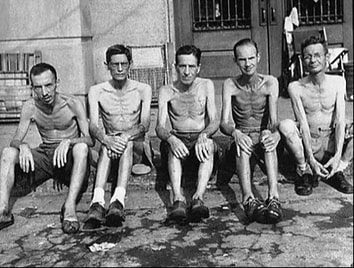|
How did this come about? Before World War II, as many as ten thousand American expats were living and doing business in the Philippines. Officially American territory, the islands were slated for independence in 1946. But after the Japanese pummeled Pearl Harbor, they targeted the American military strongholds closest to Japan—Manila’s Clark Air Force Base, Nichols Field, and the U.S. naval fleet at Subic Bay. For Allied civilians living there, three years of captivity, overcrowding, squalor, disease, cruelty, and hunger followed. My mother, Lee Iserson, thirteen-and-a half at the time of their imprisonment, was among the children interned, along with her mother and sister. Internees showed courage and pluck throughout the three years: within three weeks of internment, they'd established a K-12 school for the more than seven hundred children. They organized a sanitation committee, a health committee, an education committee, a religious services committee. They printed an “Internews” newspaper, manned a Central Kitchen, and haggled with the Japanese for buying privileges outside of camp. They mandated camp duties and had their own patrol system set up within the camp. Conditions and Japanese “magnanimity” worsened dramatically as time went on. True grit was required in January 1945. Days before Christmas 1944, American pilots dropped leaflets on the camp, proclaiming “American forces of Liberation in the Pacific wish their gallant Allies, the People of the Philippines, all the blessings of Christmas and the realization of their fervent hopes for the New Year.” Surely, the liberating forces were about to free them. But January became a crucible of suffering. No Christmas Red Cross packages supplemented camp rations, as had been the case in December 1943. Breakfast and dinner now consisted of one scoop of lugao, a thin rice gruel. In January internees were dying of starvation at the rate of one per day. School, a perennial distraction for the camp’s children, had ended partly because internees could not afford the calorie expenditure to climb stairs to their classrooms.  Dr. Ted Stevenson, attending the dying in the Camp’s hospital, exemplified courage when he refused to falsify death certificates. He had been indicating “malnutrition” and “starvation” as causes of death, but was told by his captors (who feared Allied accusations of war crimes) that those were no longer acceptable, and other causes should be substituted. Dr. Stevenson dug in his heels and said “no.” He risked being carted off to Torture Central, Fort Santiago, by refusing to do so, but found himself thrown into the camp jail instead. For women and children struggling to survive, courage was closely linked to imagination and hope. The topic of food dominated every conversation, and many internees had taken to writing recipes and planning menus, as a substitute for actual food. My mother kept a thin-lined, spiral-bound notebook with more than three hundred seventy recipes written in tiny script. Her January entries were for Pineapple Raisin Ice Cream, Stuffed Pork Shoulder, Ham Pancakes, and Chocolate Mint Roll. Some of the little children played restaurant. When asked for their order by their big sister waitress, one little girl replied she’d like a sandwich. “What kind?” big sister asked. “I’d like a sandwich with some bread on it,” said the four year old, all earnestness. (There had been no bread for eighteen months.) Ex-internee Curtis Brooks has written: “we shared a common moral experience, the loss of home and possessions, the loss of country in the defeat of ’42, the almost palpable sense of waiting. Waiting for the liberation which we all believed in…[we were] a community with a single purpose, to survive to the day of liberation.” Survival in January 1945 required every ounce of courage those internees could muster. At a 2015 conference in Manila celebrating the 70th anniversary of Santo Tomas’s liberation, surviving internees (most of whom were children at the time of liberation) described circumstances at the end. A high-school student in the audience asked: “I struggle with depression, and sometimes think of suicide. Were you ever tempted to suicide?” Joan Bennett Chapman, the presenting internee, seemed genuinely taken aback by the question. Then said, “No. Never. We were certain our boys would be back for us. Our job was to hold on to hope.” They did so with courage. Mary Beth Klee. Mary Beth is the author of Leonore's Suite, a novel about the teen experience of internment at Santo Tomas. Forthcoming February 2020. To read more from Telling Our Stories, visit our Blog Archives page. |
AuthorWrite something about yourself. No need to be fancy, just an overview. Archives
July 2024
Categories |
